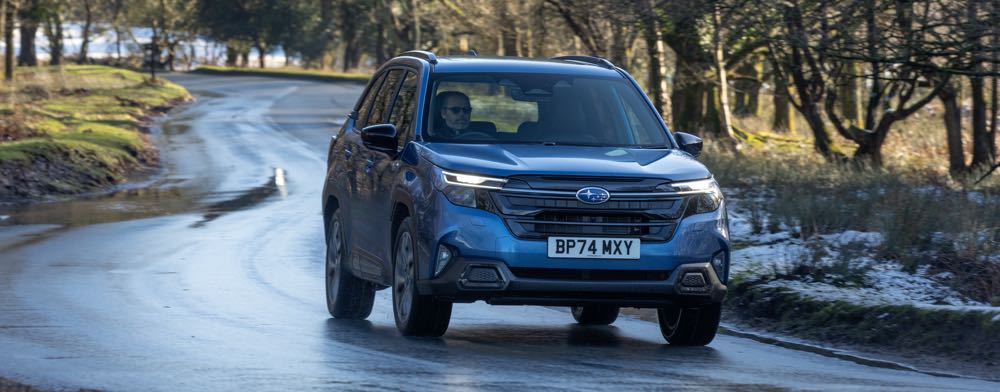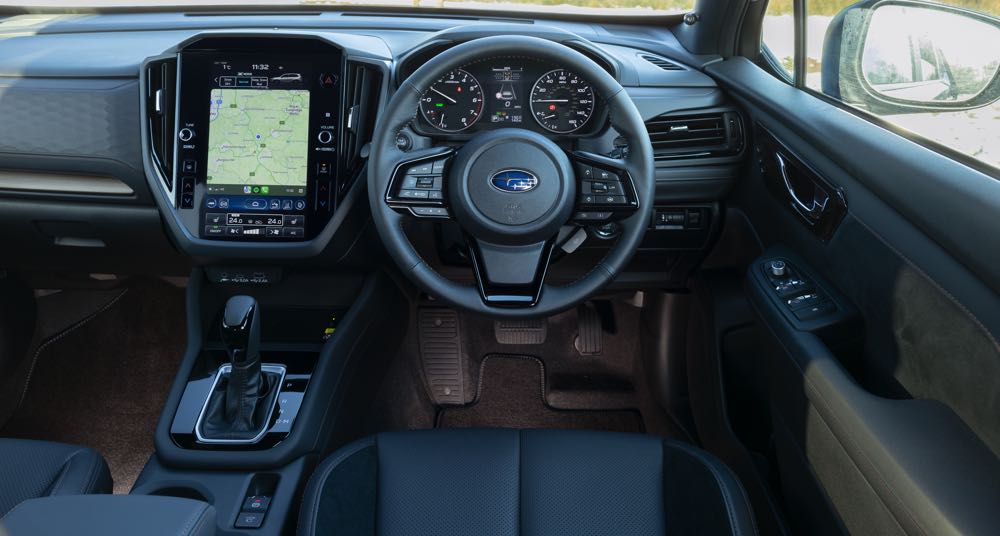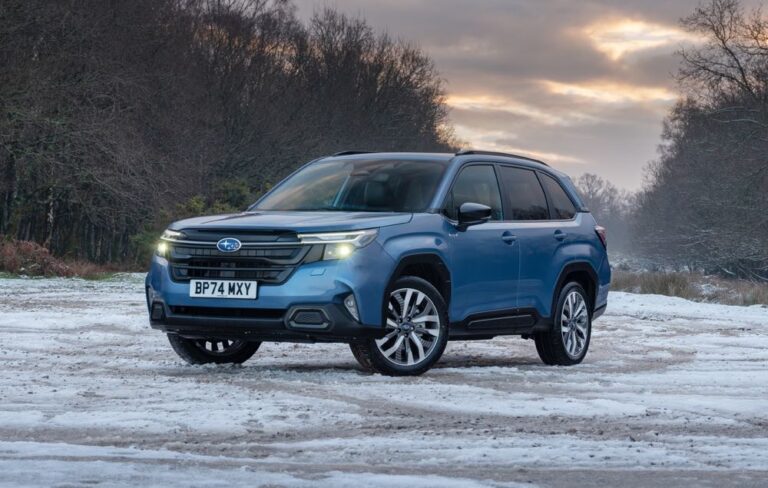Revised, repriced and released this Spring, the Subaru Forester is ready to take on rivals in the serious SUV sector in 2025.
Launched in 1997 on the back of a very impressive rallying impact by Subaru, the Forester was aimed squarely at the expanding SUV sector but in particular the country dweller who’d appreciate simple yet effective full-time all-wheel-drive.

Here was something to pull a horsebox or agricultural trailer or possibly actually tow your Impreza to an event. Over five million have been sold.
The new Subaru Forester range comprises the Limited from £38,995, Field at £41,545 or Touring £44,100.
A quick run down of the range begins with the Limited and it comes with Eyesight 4.0 safety and driver system, 18” Alloy Wheels, Illuminated Ports & Wireless Charger, Memory Driver Seats, Electronically Adjustable & Heated Front Seats, Auto-Dimming Rear View Mirror, Wireless Apple CarPlay & Android Auto, and 360 Degree Surround View Camera.
The Field get additionally Privacy Glass, Heated Steering Wheel, Powered Gesture Tailgate, In-built Satellite Navigation while the Touring tops the series with 19” Alloy Wheels, Heated Rear Seats, Power Sliding UV Glass Sunroof, Black Leather Interior Trim.

The sixth generation Forester uses a tweaked version of the acclaimed flat-four cylinder 2.0 litre petrol engine matched with a small electric motor to reduce emissions and lift pulling power.
At 1.7 tonnes it is a heavy car in Touring trim and the engine does struggle a bit even with the electric motor assisting but it is a good long distance cruiser on main or motorway roads.
Subaru engineers have done a lot of work to improve the comfort of the car, with much better seats than the fifth series and a lot of noise reduction measures and materials have been used to refine the experience as well.
Driving the new Forester for the first time I was struck by the apparent luxury car comfort from the deep, well padded and shaped seats, the insulated suspension and the highly responsive powertrain.
Subaru’s asymmetrical permanent four-wheel-drive demands little of the driver but rewards a lot through excellent grip and confident control through a corner.
The seven-step Lineartronic automatic transmission was seamless and silent shifting up or down and you could even ‘drive’ in a manual setting if desired.
Refinements include the fitting of a dual-pinion electric power steering system to sharpen responses and give better feedback on open roads but its still a big car to park in most spaces although the effort required is now less than before.
The engine was fairly quiet until it was stretched to perform and showed the familiar “throbing-note” at higher speed, particularly accelerating but not so much cruising.
Progress was regal rather than racey as it worked up speed and the transmission joined in.
When you had to slow or stop the brakes only needed slight pedal pressure to effect rapid deceleration but it was annoying not to have an automatic hold setting on the parking brake which needed to be set each time.

Secondary controls on the column and wheelspokes did a multitude of tasks and needed a lot of familiarisation to find firt time each time. The wipers were some of the longest I’ve encountered on any car and really swept a huge slice of the windows both ends.
Lights were bright, wide spread and far reaching too.
A low waistline relative to the driving seat helped vision around the car but the sophisticated Eyesight system covered hidden areas and a few sensors worked away when parking.
I liked the fact a driver can utilise all or just some of the Eyesight system so it does not interrupt or intrude too much on a journey and yet it’s there if you need it.
The big infotainment screen has really clear and large displays and buttons with some features sensibly not touch-screen technology. It was a very comprehensive set up, clear and quick to change.
Infront of the driver, the familiar speedometer and tachometer were instantly readable and backed up by a selectable display between them for chosen data.
In a family car, the oddments room is important and the Forester was not lacking anywhere and our Touring version came with extra power points, leather trim and a big sunroof.
The flat floor was easy to load and the powered door opened by way of internal or external switches for convenience and the back seats’ offset gradually raised capacity with them dropping almost completely flat as well to more than triple capacity.
Access to the cabin was easy and once inside the leg and headroom was very generous and even had rear seat heating.
Despite the high level of necessary, desirable and practical equipment and thought which has gone into the new Subaru Forester someone should have included a bit more flare in the look of the car, particularly inside where darkness dominated.
Existing Forester owners will like the improvements and the mechanical ability beats many SUV competitors, while its size has an advantage over them too when you really need room, but the performance is unremarkable unless you regularly tow something.
FAST FACTS
- Model: Subaru Forester Touring
- Price: £44,100
- Mechanical: 134bhp 4cyl 2.0 litre petrol-hybrid, 7spA
- Max Speed: 116mph
- 0-62mph: 12.2 secs
- Combined MPG: 43
- Insurance Group: 23E
- C02 emissions: 183 gkm
- Bik rating: 37%, £2,190FY, £620×5 SR
- Warranty: 3yrs/60,000 miles & 8yrs/100,000 miles battery
- Size: L4.67m, W1.83m, H 1.73m
- Bootspace: 508 to 1720 litres
- Kerbweight: 1717kg
For: Very roomy even in rear, good seats, fair economy, smooth powertrain, lots of desirable features standard, good roadholding and ride, generally quiet, full-time 4×4
Against: Modest power for weight and size, not agile, some engine noise, dull interior finish, average warranty.

